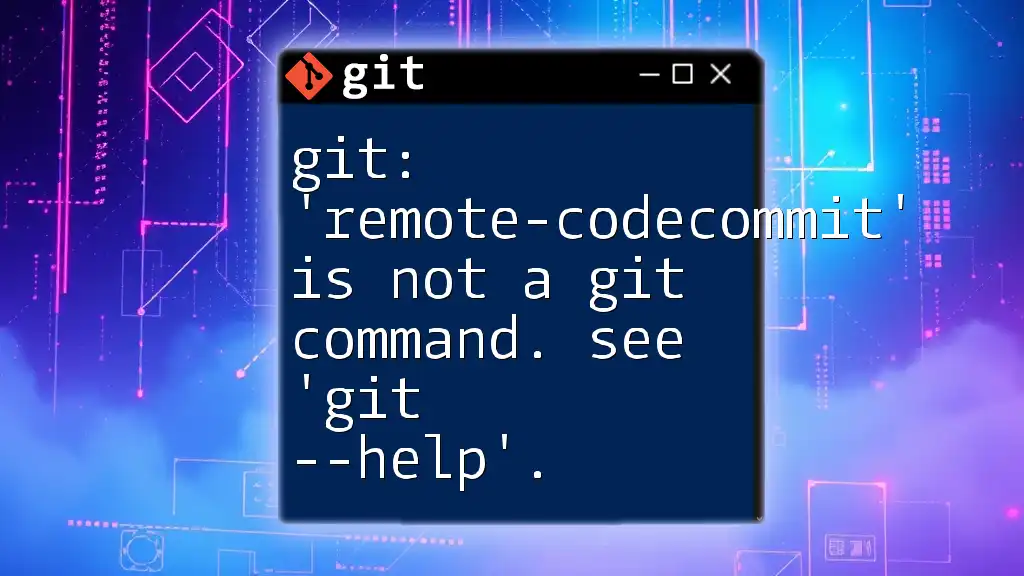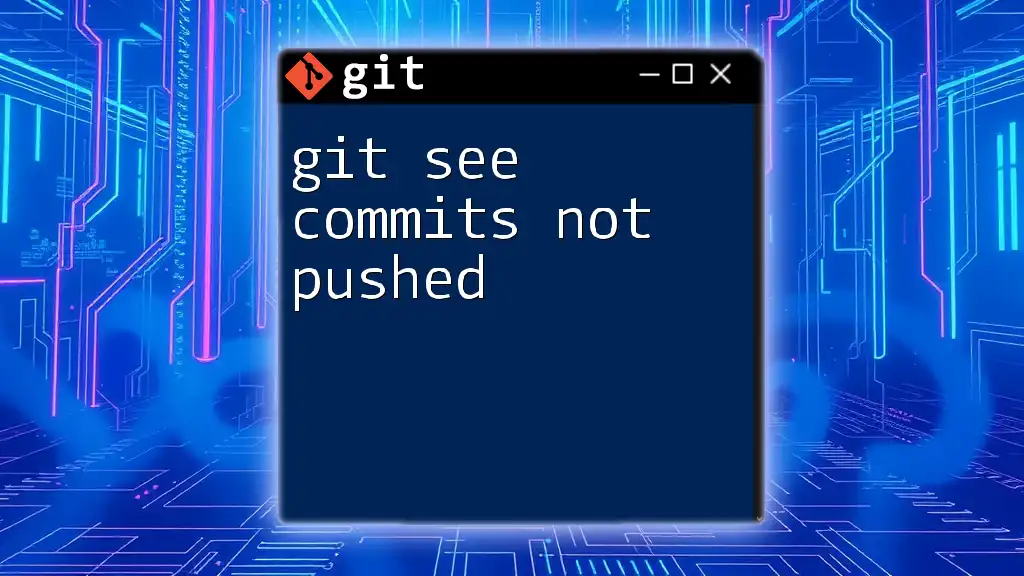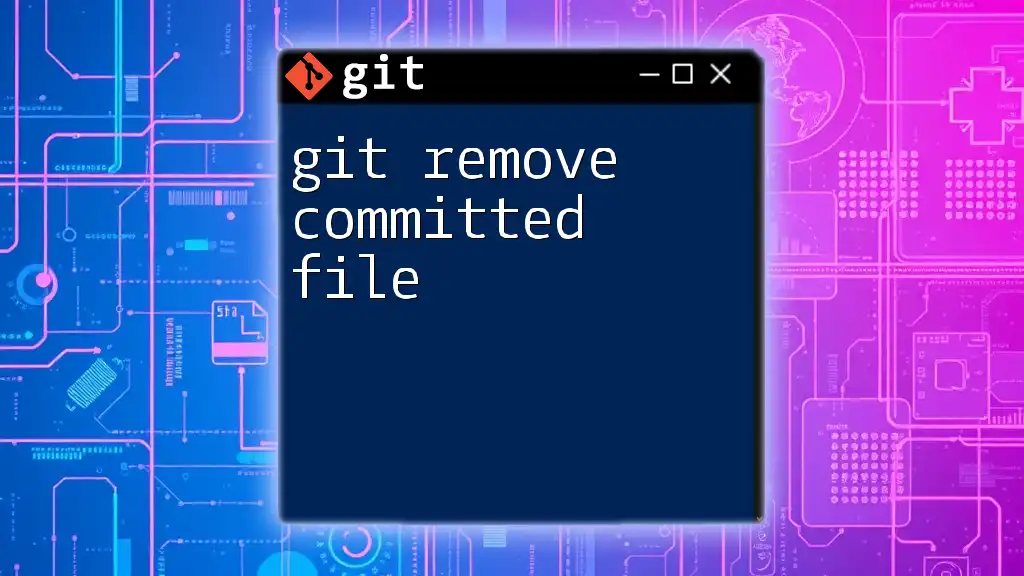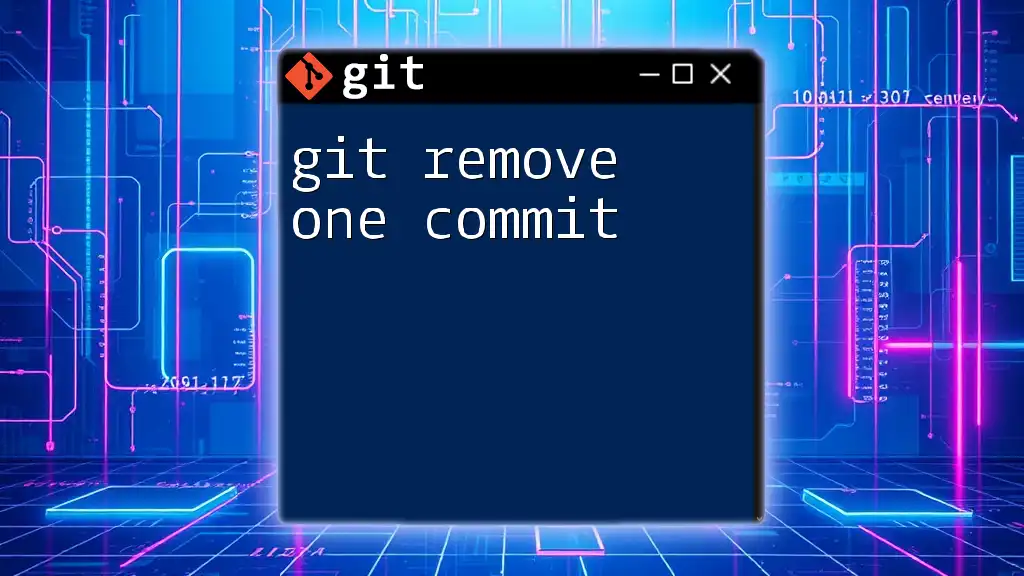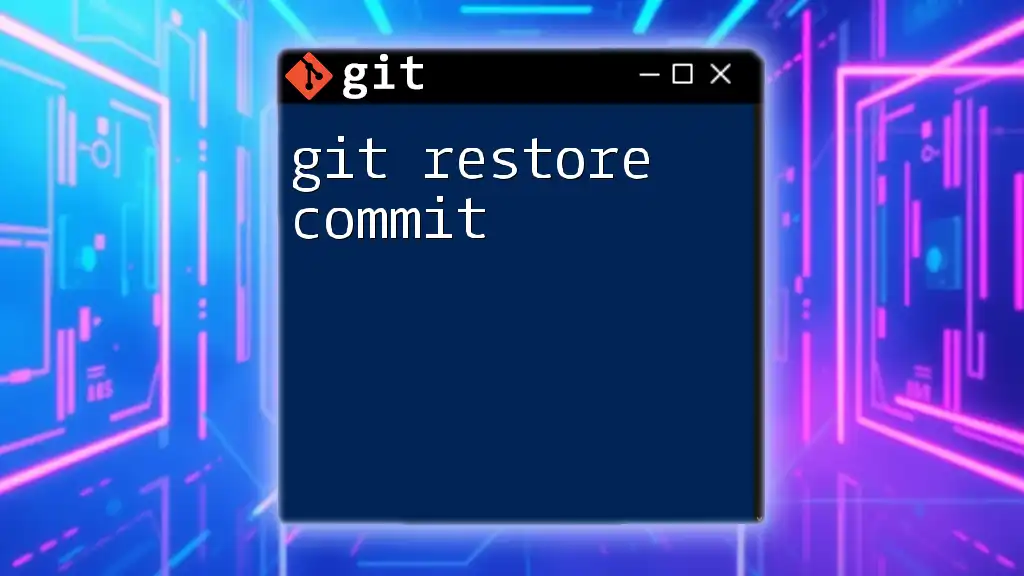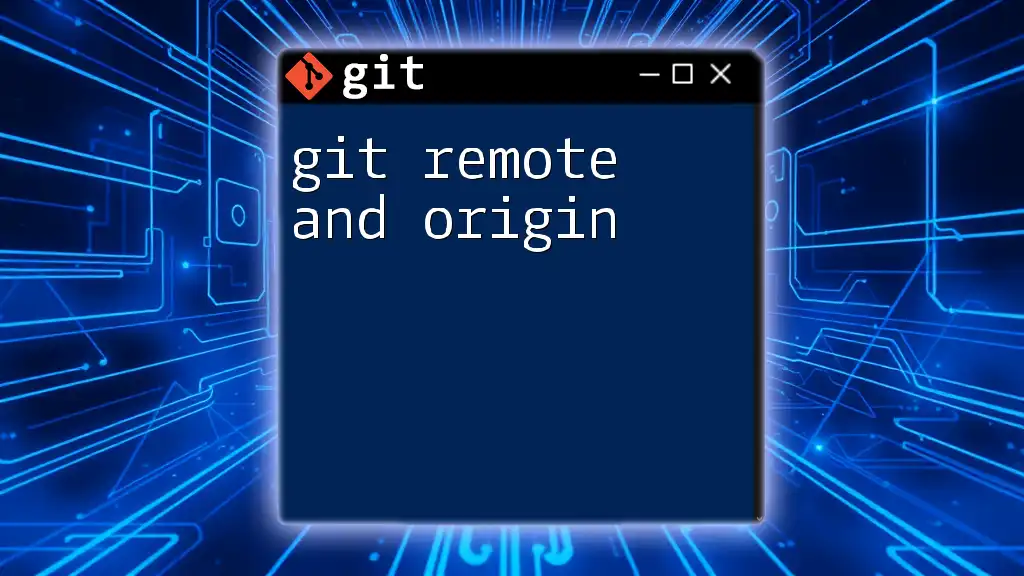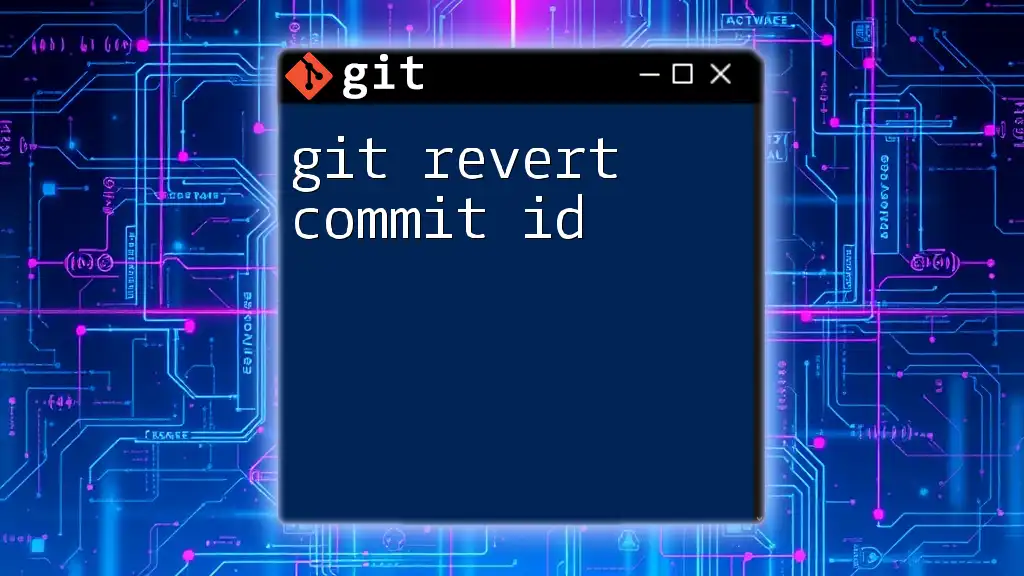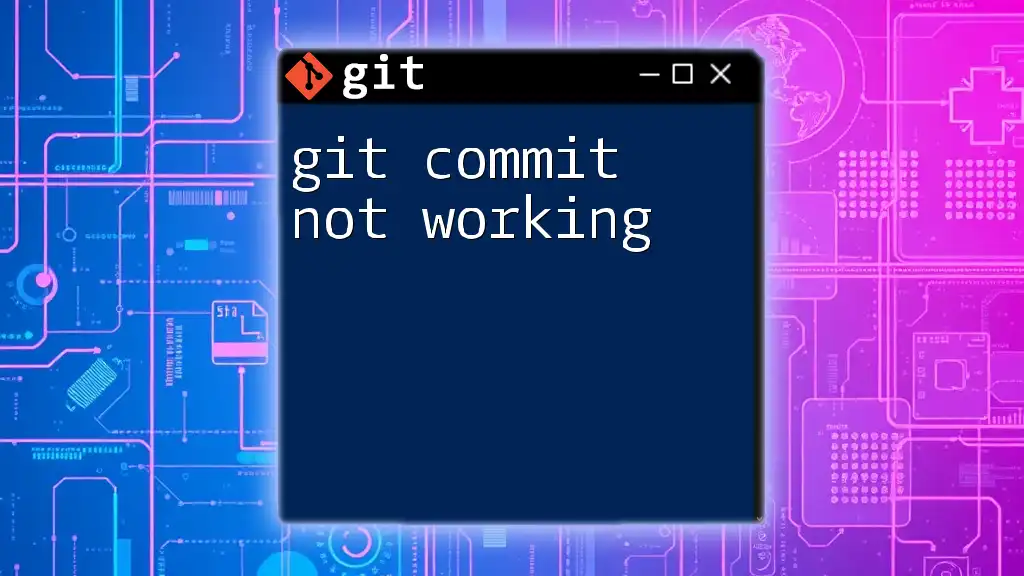The error message "git: 'remote-codecommit' is not a git command. see 'git --help'" indicates that Git does not recognize 'remote-codecommit' as a valid command, which may stem from a missing plugin or incorrect syntax.
git remote add origin https://git-codecommit.region.amazonaws.com/v1/repos/MyRepo
Understanding Git Commands
What are Git Commands?
Git commands are the instructions used to interact with the Git version control system. These commands form the foundation of repository management, allowing users to track changes, revert to previous states, and collaborate with others. Understanding these commands is essential for effective software development workflows.
Common Types of Git Commands
Git commands can broadly be categorized into two types:
- Local Commands: These are executed within your local repository. Common examples include:
- `git add`: Stage changes for the next commit.
- `git commit`: Record changes to the repository.
- Remote Commands: These commands facilitate interactions with remote repositories. Essential commands include:
- `git push`: Upload local repository changes to a remote repository.
- `git pull`: Fetch and merge changes from a remote repository to your local copy.
- `git clone`: Create a local copy of a remote repository.

The Error Explained
What Does the Error Mean?
When you encounter the error message "git: 'remote-codecommit' is not a git command. see 'git --help'", it indicates that Git cannot recognize the command `remote-codecommit`. This is often due to a misunderstanding of the command's syntax or context. To break it down further:
- 'remote-codecommit': This suggests you are attempting to use a command related to AWS CodeCommit, which is not a standard Git command.
- 'not a git command': Essentially, it tells you that Git does not recognize the input as a valid command.
- 'see git --help': This part suggests that you can access Git's help documentation for more guidance, which is always a good first step when troubleshooting.
Causes of the Error
There are several potential causes for this error:
- Typographical Errors: A simple typo in your command can trigger this message. Always double-check spellings and syntax.
- Missing Git Extensions: If you are trying to use a command that relies on extensions (e.g., AWS CLI for CodeCommit), those extensions may not be installed or configured correctly.
- Confusion with Similar Commands: New users may confuse similar command names, like `git remote` or `aws codecommit`, leading to this type of error.
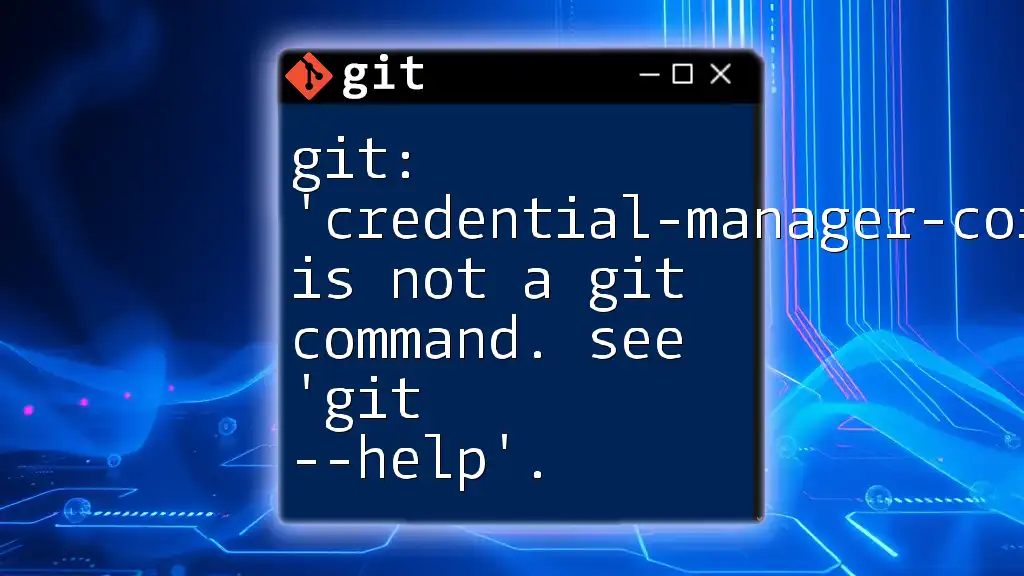
Troubleshooting the Error
Checking Installed Git Version
To ensure your Git installation is functioning properly, start by checking your current Git version. You can do this with the following command:
git --version
This will display the version you have installed, confirming that Git is set up correctly on your system.
Validating Available Commands
If you're unsure if a command exists or how to use it, you can access Git's help feature. Use:
git --help
This command will bring up a list of available commands and a brief description of their functionality. It’s an invaluable resource when troubleshooting or learning new commands.
Common Alternatives
If you meant to use commands related to managing remotes, familiarize yourself with the following basic `git remote` commands:
- Add a remote:
git remote add <name> <url> - Remove a remote:
git remote remove <name> - List remotes:
git remote -v
These commands are fundamental for managing the connections between your local and remote repositories.
Installing Missing Extensions
For commands related to AWS CodeCommit, ensure you have the necessary tools installed. One common prerequisite is the AWS Command Line Interface (CLI). Here’s how to install it:
pip install awscli
Make sure to configure the CLI with your AWS credentials afterward by running:
aws configure
This command will prompt you to enter your AWS Access Key, Secret Key, region, and output format.
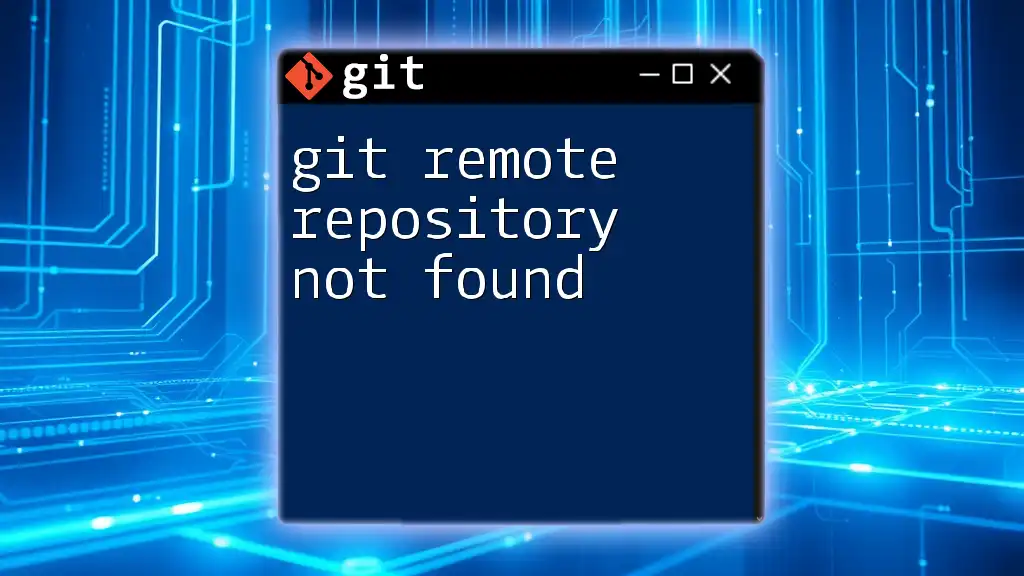
Best Practices for Using Git Commands
Familiarity with Command Line Interfaces (CLI)
Being comfortable with the command line interface is crucial when using Git. A strong grasp of CLI not only speeds up your workflow but also helps in troubleshooting issues efficiently. If you're new to the command line, consider taking time to learn its basics.
Keeping Documentation Handy
Always keep Git's documentation within reach. The official Git documentation is extensive and serves as an excellent reference guide. You can find it here: [Official Git Documentation](https://git-scm.com/doc). Bookmark it or download relevant sections for offline use.
Regularly Updating Git
To make sure you have access to the latest features and fixes, it's essential to update your Git installation regularly. For example, on a Linux system, you might use:
sudo apt-get update
sudo apt-get install git
Staying updated ensures compatibility with the latest command syntax and available extensions.
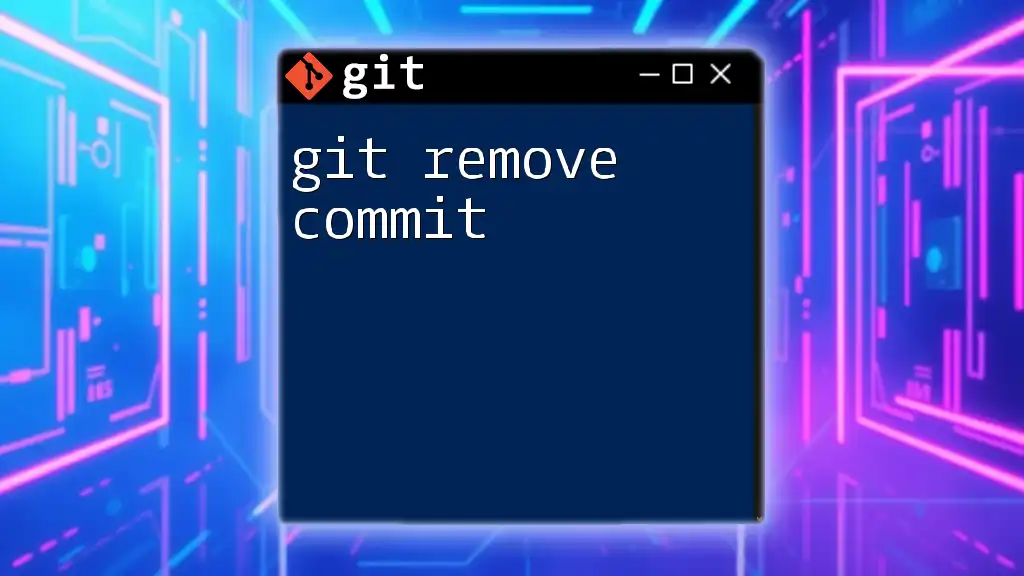
Conclusion
Understanding the error "git: 'remote-codecommit' is not a git command. see 'git --help'" is an essential part of mastering Git. By following the troubleshooting steps outlined above, you can resolve this issue and deepen your understanding of Git commands.
Engage with your community! Share your experiences or ask questions about your challenges with Git commands. The more you practice, the more proficient you will become.
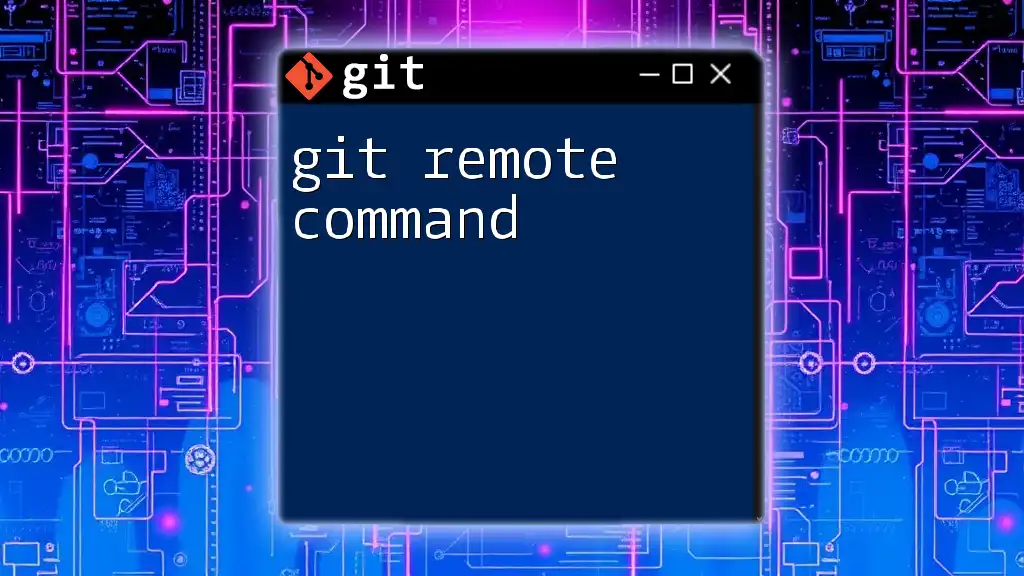
Frequently Asked Questions (FAQs)
What should I do if I encounter this error again?
If you run into this error, you can systematically troubleshoot by:
- Checking for typos in your command.
- Running `git help` to see all available commands.
- Verifying that all necessary extensions are installed.
Are there other common Git errors I should be aware of?
Yes, it’s helpful to be aware of other frequent Git errors, such as:
- "fatal: not a git repository": Indicates that you aren't in a Git-managed directory.
- "error: failed to push some refs": Usually means your local branch is behind the remote branch.
Where can I learn more about Git?
For deeper learning, consider recommended resources such as tutorials, official documentation, and community forums. Online platforms often offer comprehensive courses tailored for different skill levels.
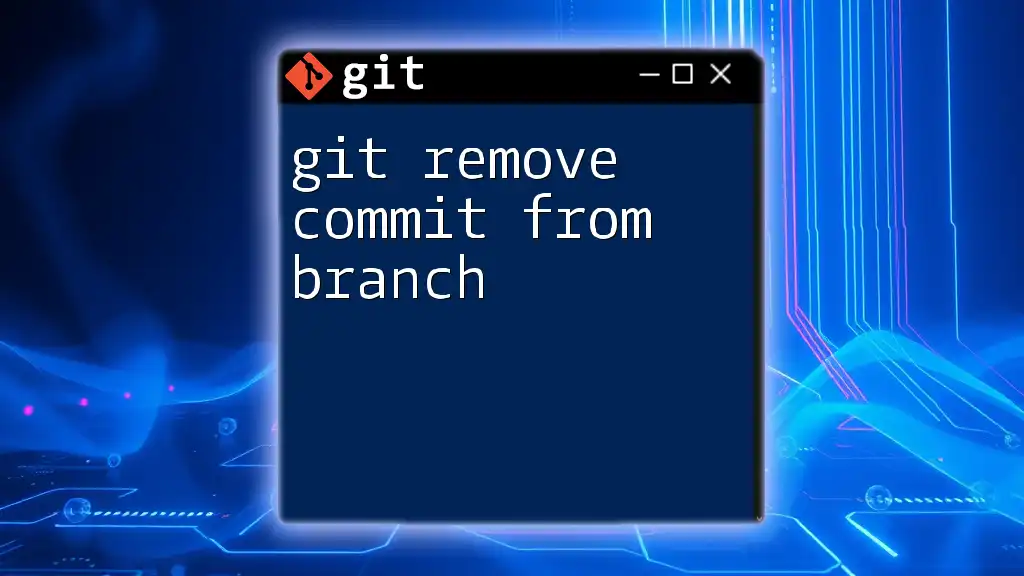
Call to Action
Share your journey with Git! Whether you're facing challenges or celebrating successes, your experiences can help foster a community of learners. Don't hesitate to join workshops or webinars we offer to further enhance your Git skills.

